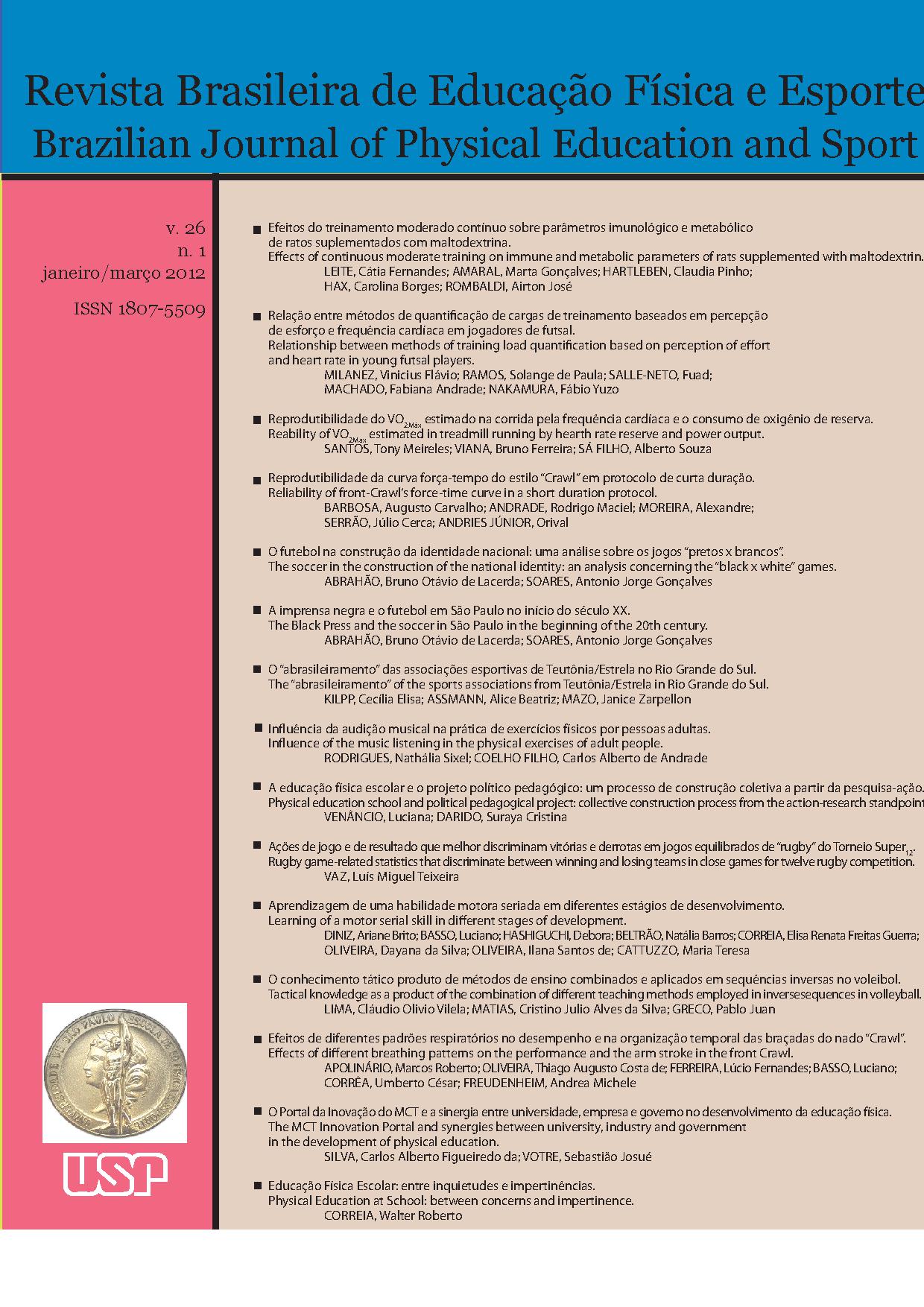Aprendizagem de uma habilidade motora seriada em diferentes estágios de desenvolvimento
DOI:
https://doi.org/10.1590/S1807-55092012000100012Palabras clave:
Aprendizagem, Desempenho psicomotor, Tarefa de rastreamento, Padrão serialResumen
Este estudo investigou a aprendizagem de uma tarefa motora seriada em diferentes estágios de desenvolvimento. Quinze crianças, 14 adultos e 13 idosos praticaram a tarefa de rastrear uma sequência de seis estímulos luminosos durante 10 blocos de tentativas ou até descobrir a sequência, constituindo a fase de estabilização e mais dois blocos de tentativas, referentes as fases de adaptação I e II. O desempenho foi mensurado por meio das respostas funcionais e não-funcionais e das sequências funcionais. Os resultados indicaram que os adultos foram superiores aos demais participantes, e idosos apresentaram melhor desempenho que crianças apenas no início da prática, sugerindo que o estágio de desenvolvimento interage com o processo de aprendizagem motora.Descargas
Los datos de descarga aún no están disponibles.
Descargas
Publicado
2012-03-01
Número
Sección
Artigos Originais - Pedagogia e Comportamento
Licencia
Todo o conteúdo da revista, exceto onde está identificado, está licenciado sob uma Licença Creative Commons (CC-BY)
Cómo citar
Diniz, A. B., Basso, L., Hashiguchi, D., Beltrão, N. B., Correia, E. R. F. G., Oliveira, D. da S., Oliveira, I. S. de, & Cattuzzo, M. T. (2012). Aprendizagem de uma habilidade motora seriada em diferentes estágios de desenvolvimento . Revista Brasileira De Educação Física E Esporte, 26(1), 119-128. https://doi.org/10.1590/S1807-55092012000100012


